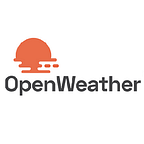UV radiation: Its influence on ecosystems. The tools for secure monitoring — API for UV-index
In recent years, the question of changes happening to a phenomenon of ultraviolet radiation at the earth’s surface attracts increasing attention. The influence of ultraviolet radiation on the life on the Earth is immense. It is enough saying that ultraviolet radiation is one of the most important factors for evolutionary progress of nearly all living creatures. Various ecosystems in their development process have adapted to a level of UV radiation to some extent anyway. Thus it is crucially important for successful functioning of these systems that the UV level stays within a specific range as its abrupt shift can lead to serious consequences, to negative ones and however sometimes to positive. These shifts take their toll on the all ecosystems such as vegetation, freshwater habitats and sees, and certainly they have a strong effect on human activity.
Plants do have the ability to recover, but when a received radiation dose exceeds their regeneration ability so then damage is inevitable. UV radiation damage becomes apparent in decreasing of crop yield and fertility, in lowering of quality of goods and in ecological aftermath such as the change of proportion of cultivated plants and weeds.
It’s also necessary to consider here that UV radiation reduces the wear resistance of materials employed for outdoor usage. Even a slight increase in the level of UV radiation drives to diminishing of a service life of external facilities and to rising of repair and replacement costs. Nowadays effective researches are conducted to register the influence of UV radiation on a human body, and that influence can be beneficial, and what’s more it’s essential for a regular vital activity, and it can be almost destroying for a lively creature.
Data on intensity of UV radiation is highly required recently. Particularly when speaking about substantial changes of climate which are happening now and which are obvious to any ordinary person without any sensitive measuring instruments.
That’s why there are currently in need the tools for secure monitoring and forecasting of these changes, for development of successful management of possible consequences and for reliable assessment of current and future context.
Fortunately, this tool really exists and has been in operation for some time already. Over the past few years, OpenWeatherMap company has provided a significant data volume on UV-index. We deliver UVI current data as well as daily forecasts for a period of 8 days for any locations. Also we have started accumulation of historical data actively.
Then recently we have greatly improved the quality of provided data, that’s our API for UV-index. For example, now there is a new feature to request data on any geographic coordinates without limits on accuracy.
Accuracy of UVI modeled data has been increased twice (the interpolation grid step decreased from 0.5 to 0.25 degrees).
Soon the support of search by city name, city id and zip-code will be available.
You can find the instructions here http://openweathermap.org/api/uvi
